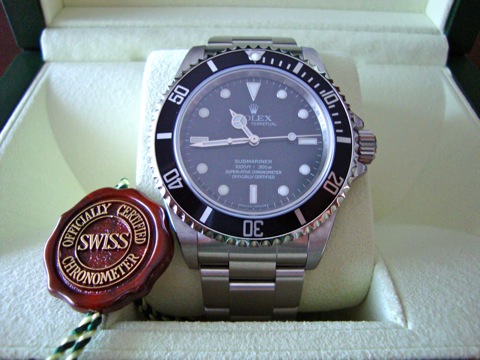|
Founded in 1973 in its current structure, the COSC is a
not-for-profit association. It was created by five watch making cantons (Bern,
Geneva, Neuchâtel, Solothurn and Vaud) as well as the Federation of the Swiss
Watch Industry. It encompasses the laboratories that had been established
independently of each other from the late 19th century onwards.
Its goal is to:
Measure and test the precision of watch
and clocks movements in order to grant them official chronometer status.
Promote the chronometer and undertake any legal action aimed at defending and
protecting this title internationally.
The COSC does not manufacture chronometers; it merely certifies that the
watchmakers have provided this high value added for their products and attests
that they may justifiably claim this prestigious title. The BOs (short for
"Bureaux Officiels de Contrôle de la marche des montres" - meaning
Official Watch Rating Centres) currently constitute the three laboratories
within the COSC.
Located in Bienne, Geneva and Le Locle, their mission is to test the movements
submitted by manufacturers. They have each earned individual accreditation as SCS (Swiss
Calibration Service) laboratories from SAS (Swiss Accreditation Service).
The
three BOs work with state-of-the-art equipment developed in-house by the COSC
engineers. The specific requirements are such that all the BO instruments have
had to be custom-made, since nothing equivalent exists on the instrument
market. The COSC management, based in La Chaux-de-Fonds, coordinates the
operation of the BOs and provides them with the measurement and result
management equipment, as well as ensuring maintenance. It establishes the
testing prescriptions applicable to the various types of movement submitted, it
develops the equipment and measurement methods for the BOs and undertakes any
necessary action in matters relating to marketing, communication and defense of
the chronometer in the broadest sense of the term.
The future of the COSC is closely entwined
with that of the submitting producers and the evolution of their needs. While
the responsibility of the COSC is to tirelessly improve its productivity and
above all the precision of its testing methods, it must also play a determining
role in watchmakers ongoing quest to develop ever more efficient products. It thereby ensures that the precision one must
expect from a modern chronometer is consistent with the state of the art in
terms of high-end watch production.
The COSC must maintain constant contact with
its partners. Thanks to its rigorous standards, objectiveness and neutrality,
it serves as the guarantor of the voluntary determination to achieve precision
and excellence stemming directly from the producers themselves.

The term chronometer is often wrongly
applied to timekeeping instruments fitted with an additional mechanism that may
be set in motion by pushbuttons to enable measurement of the duration of an
event. Such an instrument is in fact a chronograph or chronoscope. It may of
course be chronometer-certified, provided it meets the criteria set for the
standard. In its technical regulations, the COSC has included an additional
condition, namely the permanent display of the seconds.
So a chronometer is in fact high-precision
watch capable of displaying the seconds and housing a movement that has been
tested over several days, in different positions and at different temperatures,
by an official neutral body (COSC). Each
chronometer is unique, identified by a number engraved on its movement and a
certification number given by the COSC. Each movement is individually tested
for several consecutive days, in 5 positions and at 3 temperatures. Each
movement is individually measured. Any watch with the denomination
"chronometer" is provided with a certified movement.
The
test for mechanical watches
ISO 3159 provides the definition of a
wrist-chronometer with spring balance oscillator. Only movements which meet the
precision criteria established under ISO 3159 are granted an official
chronometer certificate. Movements are tested for 16 consecutive days according
to a tests panel.

Every day, including Saturdays and
Sundays, movements are measured and rewound.
Based on these measurements, 7 eliminatory criteria are calculated.
If and only if all these criteria are met, the movement is duly
"chronometer-certified".
The
test for quartz watches
No international standard has so far been
issued regarding electronic quartz watches. Based on ISO 3159, the COSC has
drawn up a set of testing prescriptions applicable to quartz chronometers which
govern their performances in the same way as for mechanical chronometers. Taking
account of the specific technological characteristics of these products, the
COSC has adapted the tests and precision requirements. This called for the
development of special quartz movements in order to meet these new
requirements. It has become compulsory for them to be equipped with an
electronic system compensating for the variation in the frequency of the quartz
according to changes in temperature.
A new-generation quartz chronometer is
therefore 10 times more accurate than a conventional quartz watch. Moreover it
is a very exclusive product manufactured on a low scale. Each quartz
chronometer is tested for 11 days, in one position and at 3 temperatures.
The Watch Aficionado
Categorie:Attestations
|
